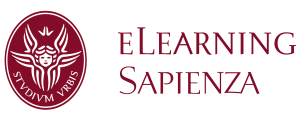in bocca al lupo!!
e se tutto manca, ci viene in salvataggio la probabilità... (buttatele a caso e prenderete la sufficienza!)
che sostiene che:
"So that means if you give your test to 200 students, and 25 of those
200 students never studied at all and just guess randomly, there is
more than a 75% chance that at least one of those random guessers
walks away with a B or better."
divertente no?
fonte:
DOMANDA:
"In solving the problem, Galileo implicitly employed our next
important principle: The chances of an event depend on the number of
ways in which it can occur. That is not a surprising statement. The
surprise is just how large that effect is--and how difficult it can
be to calculate.
For example, suppose you give a 10-question true-or-false quiz to your
class of 25 sixth-graders. Let's do an accounting of the results a
particular student might achieve: she could answer all questions
correctly; she could miss 1 question--that can happen in 10 ways
because there are 10 questions she could miss; she could miss a pair
of questions--that can happen in 45 ways because there are 45 distinct
pairs of questions; and so on.
As a result, on average in a collection of students who are randomly
guessing, for every student scoring 100 percent, you'll find about 10
scoring 90 percent and 45 scoring 80 percent. The chances of getting
a grade near 50 percent are of course still higher still, but in a
class of 25 the probability that at least one student will get a B
(80 percent) or better if all the students are guessing is about 75
percent. So, if you are a veteran teacher, it is likely that among
all the students over the years who have shown up unprepared and more
or less guessed at your quizzes, some were rewarded with an A or B."
I believe I understand how he calculated his other numbers, but how
does he come up with the 75%? That seems too high to me.
RISPOSTA:
"
The total number of possible ways to answer 10 true/false questions is
2^10 or 1024.
If students are randomly guessing, the number of ways to get 100% is
1. The number of ways to get 90% is 10. The number of ways to get
80% is 45.
Therefore, the total number of ways that a randomly guessing student
can get an 80% or better is 56. So the probability of any given
student getting 80% or better when guessing randomly is 56/1024 or
7/128 (or a little better than 5%).
If we turn that around, the chances that a single student will get
worse than 80% is 121/128.
Now, if we have 2 students who are randomly guessing, what is the
chance that BOTH of them will get worse than 80%? That's (121/128)^2
or 14641/16384 (or about 89%).
If we have 3 students randomly guessing, the probability that all
three get worse than 80% is (121/128)^3 = about 84%.
With 4 students randomly guessing, the probability of all four get
worse than 80% (in other words, the probability that NONE of them will
get 80% or better is (121/128)^4 = 80%.
So, in other words, with 4 students guessing randomly, there is a 20%
chance that at least one will walk away with a B or better.
With 5 guessing, the probability that none get a B or better is
(121/128)^5 = 75%, so there is a 25% chance that one walks away with a
B or better.
With n students guessing, the probability of none of them getting a B
or better is (121/128)^n = P.
Let's ask how many students we need to get a P value of 25%. For
that, we have:
(121/128)^n = 0.25
Let's take the log of both sides:
log ((121/128)^n) = log (0.25)
Using the properties of logarithms,
What is Log?
http://mathforum.org/library/drmath/view/58046.html
Logarithms: Solving for T
http://mathforum.org/library/drmath/view/55561.html
we can convert
log ((121/128)^n) = log (0.25)
to
n * log (121/128) = log (0.25) ,
so
n = log (0.25) / (log (121/128)) .
Using my calculator I get:
n = 24.6
So we can go back and check.
With 24 students guessing, the probability that NONE will get a B or
better is (121/128)^24 = 25.9%. So there is a 74.1% probability that
one or more of the 24 guessers walks away with a B or better.
With 25 students guessing, the probability that NONE will get a B or
better is (121/128)^25 = 24.5%. So the probability that AT LEAST one
student walks away with a B or better is 75.5%.
So that means if you give your test to 200 students, and 25 of those
200 students never studied at all and just guess randomly, there is
more than a 75% chance that at least one of those random guessers
walks away with a B or better.
I went pretty quickly over a lot of this, so if you want to talk about
any of the logic steps in more detail, please write back and let me know."

